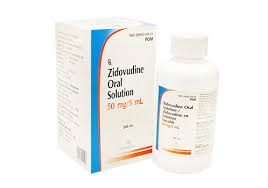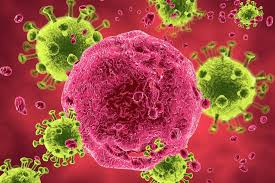
AZT for HIV Treatment: Uses, Benefits & Side Effects
AZT (Zidovudine) is a groundbreaking antiretroviral medication that has played a pivotal role in the treatment of HIV since its approval in 1987. As the first drug developed to combat the virus, AZT works by inhibiting the replication of HIV, helping to slow the progression of the disease and improve the quality of life for those living with HIV. While it is no longer used as a standalone treatment due to the development of more advanced therapies, AZT remains an important component of combination antiretroviral regimens, particularly in preventing mother-to-child transmission. Its introduction marked a turning point in the fight against HIV/AIDS, offering hope and paving the way for modern treatment strategies.

Living with HIV (Human Immunodeficiency Virus) requires a comprehensive treatment approach, and AZT, also known as Zidovudine, plays a vital role in managing the virus. AZT (Zidovudine) is an antiretroviral medication used primarily in the treatment of HIV/AIDS. It belongs to the class of drugs known as nucleoside reverse transcriptase inhibitors (NRTIs). AZT works by inhibiting the action of reverse transcriptase, an enzyme crucial for the replication of HIV, thereby slowing the progression of the disease. In this post, we will explore what you should know about AZT, including its indications, side effects, precautions, and handy tips for effectively using this medication.
Mechanism of Action:
AZT is a thymidine analog. It gets incorporated into the viral DNA during reverse transcription, causing chain termination and preventing the virus from replicating.
Indications:
AZT is primarily prescribed for the following purpose:
- HIV Treatment: AZT is an essential component of antiretroviral therapy (ART) used to manage HIV infection. It works by slowing down the replication of the virus in the body, helping to maintain a healthier immune system. Often used in combination with other antiretroviral drugs (part of highly active antiretroviral therapy (HAART)).
- Prevention of mother-to-child transmission (MTCT) of HIV during pregnancy, labor, and delivery.
Administration:
Available in oral (tablets, capsules, syrup) and intravenous (IV) forms.
Side Effects:
While AZT is effective in treating HIV, it can also cause side effects. Here are some common and less common side effects to be aware of:
Common Side Effects: These may include nausea, vomiting, headache, anemia and fatigue. Fortunately, these side effects often improve over time as your body adjusts to the medication.
Serious Side Effects: Bone marrow suppression (leading to anemia or neutropenia), lactic acidosis, hepatomegaly with steatosis (fatty liver), and myopathy.
- Bone Marrow Suppression: AZT can lead to a decrease in red blood cells, white blood cells, and platelets, potentially causing anemia, neutropenia, or thrombocytopenia. Regular blood tests can help monitor your blood cell counts.
- Muscle Weakness: Some individuals may experience muscle weakness or pain as a side effect of AZT.
- Lactic Acidosis: Although rare, AZT can lead to a severe condition called lactic acidosis. Symptoms may include rapid breathing, muscle pain, weakness, and abdominal discomfort. Seek immediate medical attention if you experience these symptoms.
Precautions:
To ensure the safe and effective use of AZT, consider these precautions:
1. Pregnancy: AZT can be used during pregnancy to reduce the risk of mother-to-child transmission of HIV. However, discuss the risks and benefits with your healthcare provider if you are pregnant or planning to become pregnant.
2. Breastfeeding: HIV-positive mothers should avoid breastfeeding to prevent transmission of the virus to their infants.
3. Bone Marrow Disorders: If you have a history of bone marrow disorders, inform your healthcare provider, as AZT can exacerbate these conditions.
4. Liver Disease: AZT should be used cautiously in individuals with pre-existing liver disease. Your healthcare provider can help assess the suitability of AZT for your specific situation.
5. Drug Interactions: Be sure to inform your healthcare provider about all medications and supplements you are taking, as AZT can interact with other drugs.
HIV can indeed develop resistance to AZT (Zidovudine) when used as monotherapy (single-drug treatment). This occurs because the virus can mutate and adapt to overcome the drug’s inhibitory effects. To prevent resistance and improve treatment outcomes, AZT is typically used in combination with other antiretroviral drugs from different classes. This approach is known as combination therapy or Highly Active Antiretroviral Therapy (HAART).

Common Drug Classes and Examples Used in Combination with AZT:
Nucleoside/Nucleotide Reverse Transcriptase Inhibitors (NRTIs/NtRTIs):
AZT itself is an NRTI, and it is often paired with other NRTIs to enhance its effectiveness.
Examples:
Lamivudine (3TC)
Abacavir (ABC)
Tenofovir Disoproxil Fumarate (TDF)
Emtricitabine (FTC)
Non-Nucleoside Reverse Transcriptase Inhibitors (NNRTIs):
These drugs bind to and inhibit reverse transcriptase at a different site than NRTIs.
Examples:
Efavirenz (EFV)
Nevirapine (NVP)
Rilpivirine (RPV)
Protease Inhibitors (PIs):
These drugs inhibit the HIV protease enzyme, preventing the maturation of new viral particles.
Examples:
Lopinavir/Ritonavir (LPV/r)
Atazanavir (ATV)
Darunavir (DRV)
Integrase Strand Transfer Inhibitors (INSTIs):
These drugs block the integrase enzyme, preventing HIV from integrating its genetic material into the host cell’s DNA.
Examples:
Dolutegravir (DTG)
Raltegravir (RAL)
Bictegravir (BIC)
Entry Inhibitors:
These drugs block HIV from entering host cells.
Examples:
Maraviroc (CCR5 antagonist)
Enfuvirtide (T-20, fusion inhibitor)
Pharmacokinetic Enhancers:
These are not antiretrovirals themselves but are used to boost the effectiveness of other drugs (e.g., PIs).
Example:
Ritonavir (RTV) or Cobicistat (COBI).
Common AZT-Based Combination Regimens:
- AZT + Lamivudine (3TC): A dual-NRTI backbone often combined with a third drug (e.g., an NNRTI, PI, or INSTI).
- AZT + Lamivudine + Efavirenz: A common first-line regimen in some settings.
- AZT + Lamivudine + Nevirapine: Used in certain resource-limited settings, particularly for preventing mother-to-child transmission (MTCT).
- AZT + Lamivudine + Dolutegravir: A modern, potent regimen with a high barrier to resistance.
-
AZT + Abacavir + Lamivudine: Another NRTI-based combination, though abacavir use requires genetic testing for HLA-B*5701 to avoid hypersensitivity reactions.
Why Combination Therapy Works:
Reduces Resistance: Using multiple drugs with different mechanisms of action makes it harder for the virus to develop resistance.
Synergistic Effect: Drugs work together to suppress viral replication more effectively.
Lowers Viral Load: Combination therapy can reduce the viral load to undetectable levels, improving immune function and reducing transmission risk.
Here are some practical tips to help you manage AZT treatment effectively:
1. Take AZT exactly as prescribed by your healthcare provider. Skipping doses or deviating from the prescribed regimen can lead to the development of drug-resistant HIV strains.
2. Attend regular appointments with your healthcare provider for monitoring, blood tests (blood counts and liver function), and discussions about side effects or concerns.
3. Drinking plenty of water can help alleviate common side effects like nausea.
4. Maintaining a balanced diet, exercising regularly, and avoiding alcohol and illicit drugs can enhance your overall well-being when living with HIV.
5. Reach out to healthcare professionals, support groups, or counselors to find emotional and social support in your HIV journey.
6. Not a cure for HIV but helps manage the infection and improve quality of life.
Addressing Myths

HIV/AIDS has been surrounded by numerous myths and misconceptions since the beginning of the epidemic. These myths often stem from misinformation, stigma, fear, and cultural or religious beliefs. Below are some common myths about HIV/AIDS, along with the facts to debunk them:
1. Myth: HIV can be transmitted through casual contact.
Fact: HIV cannot be transmitted through everyday activities like hugging, shaking hands, sharing utensils, or using the same toilet. It is not spread through saliva, sweat, or tears. HIV is transmitted through specific bodily fluids, such as blood, semen, vaginal fluids, rectal fluids, and breast milk, and only under certain conditions (e.g., unprotected sex, sharing needles, or mother-to-child transmission during childbirth or breastfeeding).
2. Myth: HIV only affects certain groups of people (e.g., gay men or drug users).
Fact: HIV can affect anyone, regardless of sexual orientation, gender, age, or race. While some groups may have higher rates of infection due to social, economic, or behavioral factors, HIV is not limited to any specific population. Everyone is at risk if they engage in unprotected sex, share needles, or have other exposure risks.
3. Myth: You can tell if someone has HIV by looking at them.
Fact: HIV often has no visible symptoms, especially in the early stages. Many people living with HIV look and feel healthy for years. The only way to know if someone has HIV is through testing.
4. Myth: HIV is a death sentence.
Fact: With proper treatment (antiretroviral therapy or ART), people living with HIV can live long, healthy lives. ART suppresses the virus, allowing the immune system to recover and preventing progression to AIDS. Many people with HIV who are on treatment have a near-normal life expectancy.
5. Myth: HIV and AIDS are the same thing.
Fact: HIV (Human Immunodeficiency Virus) is the virus that causes AIDS (Acquired Immunodeficiency Syndrome). AIDS is the final stage of HIV infection, characterized by severe damage to the immune system. With early diagnosis and treatment, most people with HIV will never develop AIDS.
6. Myth: You can get HIV from mosquito bites.
Fact: HIV cannot be transmitted by mosquitoes or other insects. The virus does not survive or replicate in insects, and mosquitoes do not inject blood from one person to another.
7. Myth: HIV can be cured by alternative therapies or natural remedies.
Fact: There is currently no cure for HIV. While alternative therapies may help manage symptoms or improve overall health, they cannot eliminate the virus. Antiretroviral therapy (ART) is the only proven treatment to control HIV and prevent its progression.
8. Myth: If both partners have HIV, they don’t need to use protection.
Fact: Even if both partners have HIV, they should still use protection (e.g., condoms) during sex. There are different strains of HIV, and it is possible to be reinfected with a different strain, which could complicate treatment and lead to drug resistance.
9. Myth: HIV can be transmitted through kissing.
Fact: HIV cannot be transmitted through kissing, even if one partner has the virus. The virus is not present in saliva in sufficient quantities to cause infection. However, open sores or bleeding gums could theoretically pose a risk, though such cases are extremely rare.
10. Myth: HIV-positive mothers will always pass the virus to their babies.
Fact: With proper medical care, including antiretroviral therapy during pregnancy, delivery, and breastfeeding, the risk of mother-to-child transmission can be reduced to less than 1%. Without treatment, the risk is around 15-45%.
11. Myth: You don’t need to worry about HIV if you’re in a monogamous relationship.
Fact: If you or your partner has engaged in high-risk behaviors (e.g., unprotected sex or sharing needles) before the relationship, it’s important to get tested. Trust is important, but knowing your HIV status is the only way to be sure.
12. Myth: HIV can be transmitted through food or water.
Fact: HIV cannot survive in food or water. It is not transmitted through consuming food or drinks prepared by someone with HIV.
13. Myth: HIV is a punishment or a result of immoral behavior.
Fact: HIV is a virus, not a moral judgment. Anyone can contract HIV, regardless of their lifestyle or choices. Stigma and discrimination only worsen the epidemic by discouraging people from getting tested or seeking treatment.
14. Myth: You can’t get HIV if you’re on PrEP (Pre-Exposure Prophylaxis).
Fact: PrEP is highly effective at preventing HIV when taken consistently and correctly, but it is not 100% foolproof. It should be used in combination with other prevention methods, such as condoms, for maximum protection.
15. Myth: HIV can be transmitted through the air.
Fact: HIV is not an airborne virus. It cannot be transmitted through coughing, sneezing, or breathing the same air as someone with HIV.
16. Myth: HIV is no longer a problem because of modern medicine.
Fact: While advances in treatment have made HIV a manageable condition, it remains a significant global health issue. Millions of people still lack access to testing, treatment, and prevention tools. Stigma and discrimination also continue to hinder progress.
17. Myth: You can get HIV from donating or receiving blood.
Fact: In most countries, blood donations are rigorously screened for HIV and other infectious diseases. The risk of contracting HIV from a blood transfusion is extremely low in places with strict screening protocols.
18. Myth: HIV can be cured by having sex with a virgin.
Fact: This is a dangerous and false belief that has led to harm and abuse. There is no cure for HIV, and this myth perpetuates stigma and violence.
19. Myth: HIV can be transmitted through tattoos or piercings.
Fact: While HIV can theoretically be transmitted through unsterilized needles, reputable tattoo and piercing studios follow strict hygiene practices to prevent infection. The risk is very low in professional settings.
20. Myth: HIV is only a problem in Africa.
Fact: While sub-Saharan Africa has the highest burden of HIV, the virus affects people worldwide. HIV is a global issue, and no country or region is immune.
AZT, or Zidovudine, is a crucial component of HIV treatment, but it comes with potential side effects and precautions. By following your healthcare provider’s guidance and these handy tips, you can effectively manage your HIV treatment and improve your quality of life while living with the virus. Always consult with your healthcare provider for personalized advice and the latest information on AZT and HIV treatment.
Disclaimer: The information provided in this content is for general informational purposes only. It is not intended as medical or healthcare advice, diagnosis, or treatment. Always seek the advice of a qualified healthcare professional with any questions you may have regarding a medical condition or healthcare decisions.

